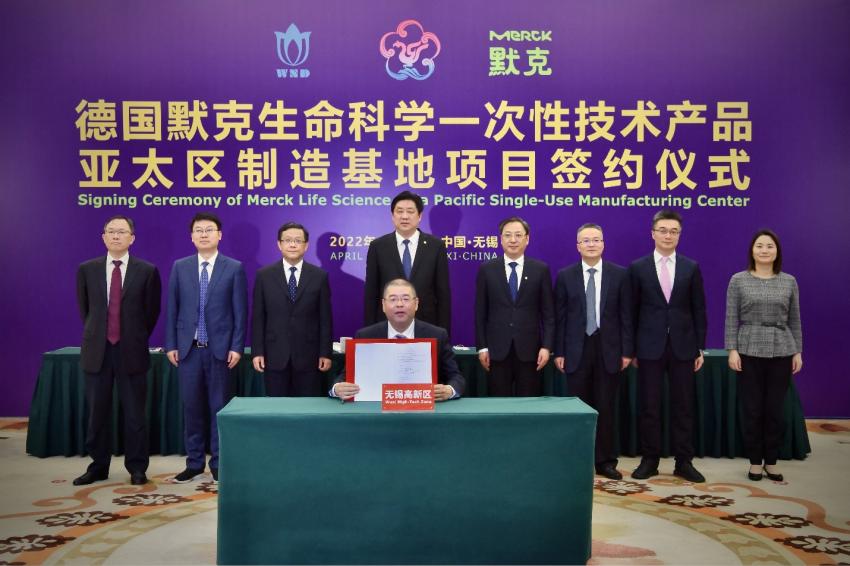Germany’s Merck to Expand Wuxi Production Site
Merck said it will invest around €100 million at the site over six years. Plans include increasing biopharma single-use assemblies and custom design capabilities. This will allow the Darmstadt-based company to at the same time extend its geographic footprint and strengthen its supply chain in China and the Asia Pacific. Some 1,000 new jobs will be created when operations start in 2024.
Bolstering its presence in China is part of the pharmaceuticals, chemicals and life sciences player’s plan to increase its total capital spending by more than 50% between 2021 and 2025, versus the 2016 to 2020 period. More than 70% of the investment is earmarked for its “Big 3 ” growth engines, which include the Process Solutions business unit and the newly formed Life Science Services business unit of the Life Science business segment.
“For more than two decades, Merck’s Life Science business segment, with the support of the Chinese government and the Wuxi authority, has served customers across academia, biopharma and diagnostics,” said Matthias Heinzel, CEO Life Science. Expanding local capabilities for the single-use assemblies is key to supporting the ongoing development and manufacture of Covid-19 vaccines and therapeutics and other lifesaving and life-enhancing treatments,” he added.
Over the next five years, Marc Jaffre, managing director Life Science business sector, said Merck expects strong growth in the bioprocessing market, with Asia growing in the mid-teens and China above 20% per annum on average. This will be fueled by increasing demand for single-use products in advanced biopharmaceutical manufacturing such as monoclonal antibodies (mAbs), vaccines, and new therapies, he said.
Since 2020, Merck has announced expansion projects for several of its European and US sites as part of a multi-year program to increase the industrial capacity and capabilities of its life science business. Over the next five years, the company will invest in Germany, China, France, Switzerland, Ireland and the US. All of the projects include “clear targets” for energy efficiency, water consumption, and waste treatment to toward the goal of becoming carbon-neutral by 2040.
Author: Dede Williams, Freelance Journalist





